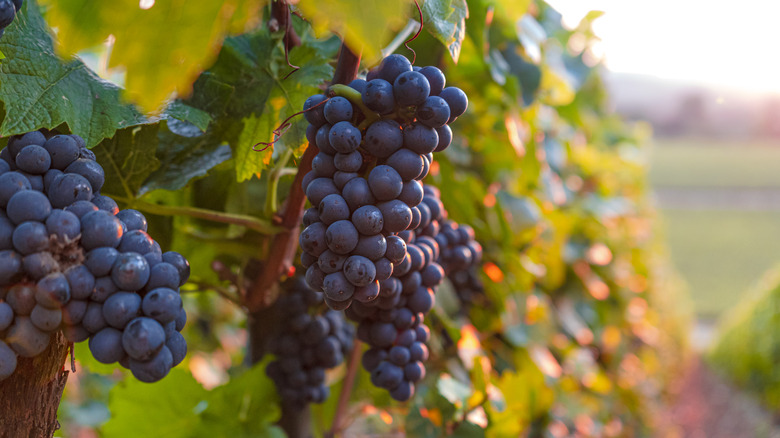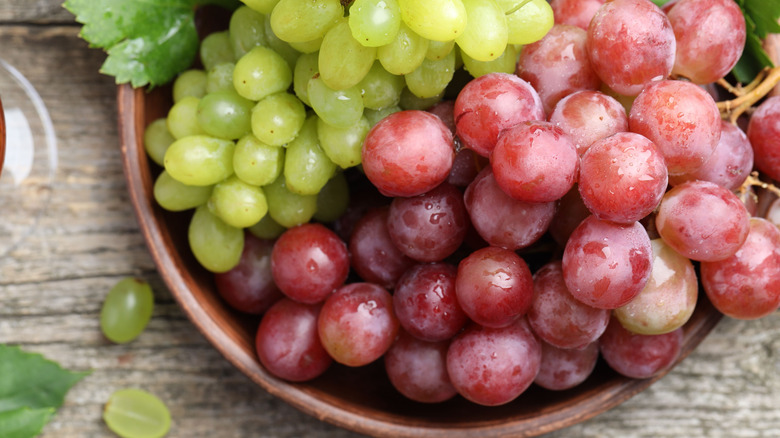What Makes Wine Grapes Different From The Ones You Get At The Store?
Whether you're eating your grapes or drinking them, you're most likely consuming a variety of the vitis vinifera species. Though they come from the same species, table grapes (the kind that you buy at the grocery store) are quite different to wine grapes. These differences can be typically seen in taste, size, and durability.
Table grapes, whether they're red or green, are larger than most wine grapes. They also have thinner skin. In some places — like in the United States — they're normally sold seedless. All of these factors make these types of grapes ideal for eating; the thin skin and lack of seeds mean table grapes have fewer tannins (compounds that are bitter and that keep animals from eating a fruit). This is exactly what makes them taste so good. (That being said, it is not unheard of to cook with wine grapes.) However, the most important difference is that table grapes stay fresh for longer which means they can survive the journey from the farm to your fridge.
On the other hand, wine grapes tend to be smaller. They also have seeds and thicker skin, ergo, more tannins. In wine, however, tannins are a good thing, as they provide the astringent dryness people love in varieties like cabernet sauvignon or malbec. Unlike table grapes, wine grapes start to rapidly degrade once they're picked, so they're not great for shipping to stores. This also means that you have probably never eaten a wine grape, unless you've visited a vineyard during harvest time.
Most commercial grapes are used to make wine
It's easy to assume that table grapes are more common than wine grapes, especially since these are the grapes we usually see in our daily lives. However, up to 75% of all grapes are actually used to make wine. Why? Because even the hardier grapes have low durability. The industry has to rely on the heavy use of technology (like coolers and plastic containers) to get grapes to grocery stores. Even with this technology, not all varieties can withstand the long journeys our globalized market demands and most varieties are better suited to making processed products like wine. Of course, another reason is that wine has been widely consumed for generations, driving demand for wine grapes.
The numbers also have to do with how many grapes are needed to make wine. While a bag of table grapes contains around 155 units (though this varies by type), the number of grapes it takes to make a bottle of wine is usually between 600 to 800. Wines that are made with smaller grapes need even more units than this. With this in mind, it's easy to see how the wine industry uses many more grapes than the companies that sell fresh grapes for eating. Either way, we're glad grapes exist so we can enjoy them both in solid and liquid form.

